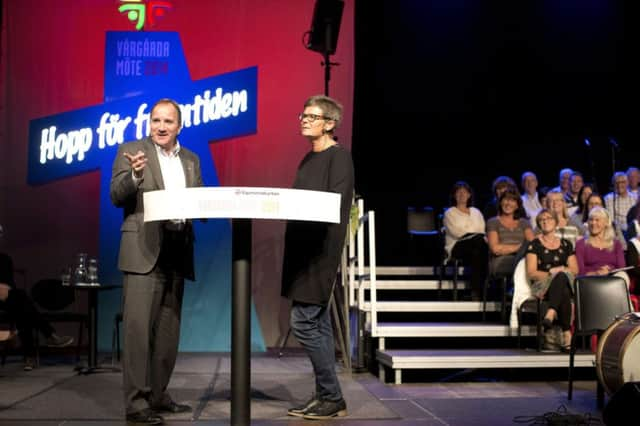Poll panic as Sweden’s big parties face deadlock


Prime minister Fredrik Reinfeldt’s centre-right coalition is battling an opposition alliance led by the Social Democrats. But neither group looks set to win a majority – putting them at the mercy of more radical leftist or far-right parties.
The Social Democrats, campaigning to spend more money on a welfare state that they founded in the last century, were the election favourites for months. But polls suggest a once seemingly unassailable lead has narrowed, unsettling businesses and investors and even raising the prospect of a new vote.
Advertisement
Hide AdAdvertisement
Hide Ad“It could be an Italian situation, something we’ve hardly ever experienced in Sweden,” said Magnus Henrekson, director of the Research Institute of Industrial Economics.
An increasingly likely scenario is that Social Democrat leader Stefan Lofven will head the biggest party but struggle to cobble together a majority. Even if he won the support of the former communist party, he could be in a minority against the far right and Reinfeldt’s coalition.
Under eight years of Reinfeldt, the government slashed taxes and trimmed welfare spending. The tax burden fell by about four percentage points to around 45 per cent of GDP – less than that of France.
Despite recovering from the global financial crisis better than most – with more Michelin star restaurants than ever sprouting in the capital and house prices booming – many voters are increasingly concerned over poor education standards and the growing role of private equity firms in running healthcare.
With youth unemployment high and a general sense the government was stale after two terms in power, it seemed voters wanted a change. But that backlash has split between social democrats, far right and far left.
Most analysts say it is too late for Reinfeldt’s Alliance to complete a shock comeback after trailing in every major poll since February 2013. But the Social Democrats – for decades Sweden’s dominant party – still appear to be heading for their worst result since universal suffrage was introduced in 1921, while the anti-immigrant Sweden Democrats look set for their best, at about 10 per cent.
“I don’t think it will be obvious what government will take office after the election is over,” said Bengt Westerberg, former leader of the Liberal Party.
A survey published this week gave the Social Democrats 30.6 per cent and the Greens – their most likely coalition partner – 8.6 per cent, with the Left Party having a further 7.1 per cent.
Advertisement
Hide AdAdvertisement
Hide AdThat would give the combined centre-left 46.3 per cent or around 167 seats, eight short of a majority. The ruling four-party Alliance, with a combined 41.3 per cent, would get around 148 seats if the outcome were repeated on Sunday.
While Sweden is used to minority governments, the current situation is unusually complex. If the Red-Greens – the Social Democrats and Green Party – are short of a majority, they are likely to look to the Left for support.
“The worst thing from a financial market perspective would be a very weak, Red-Green minority government,” said Roger Josefsson, chief economist at Danske Markets.